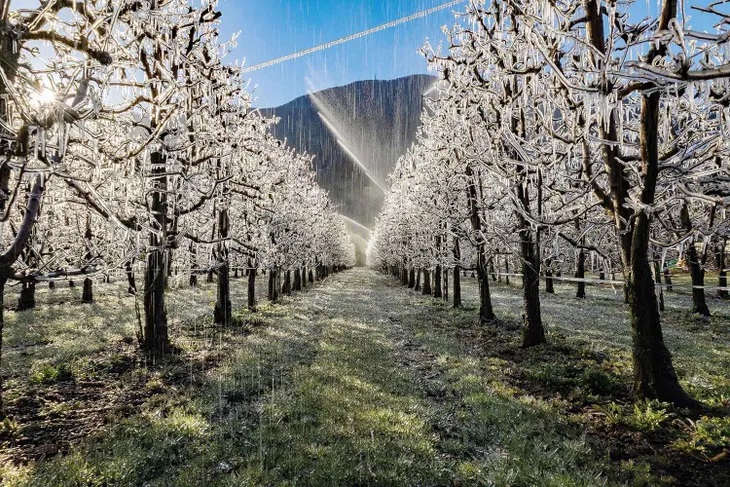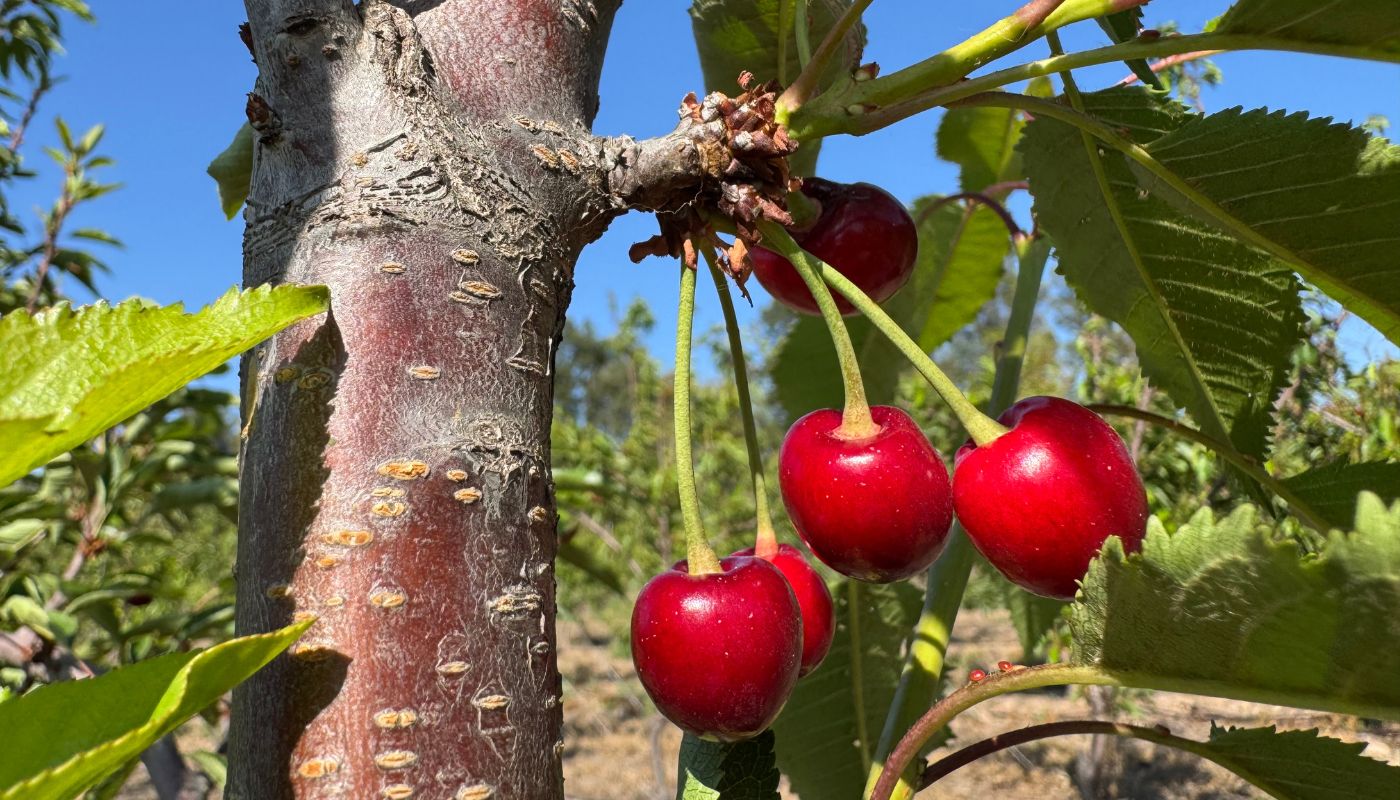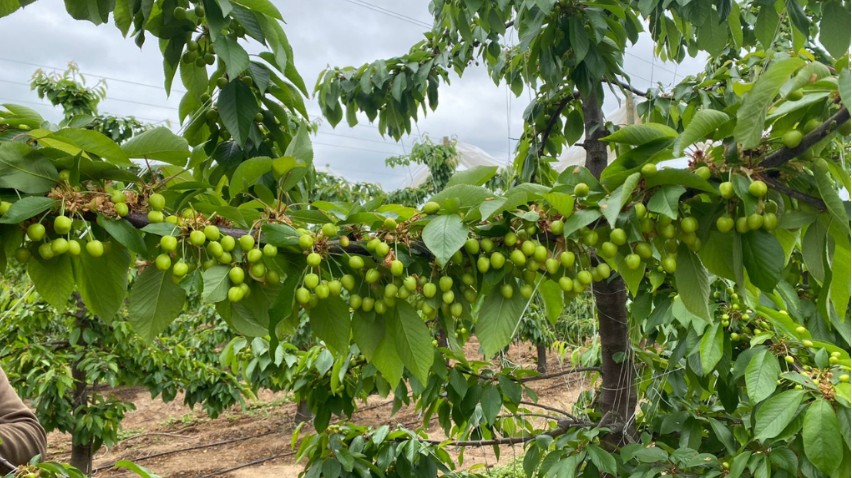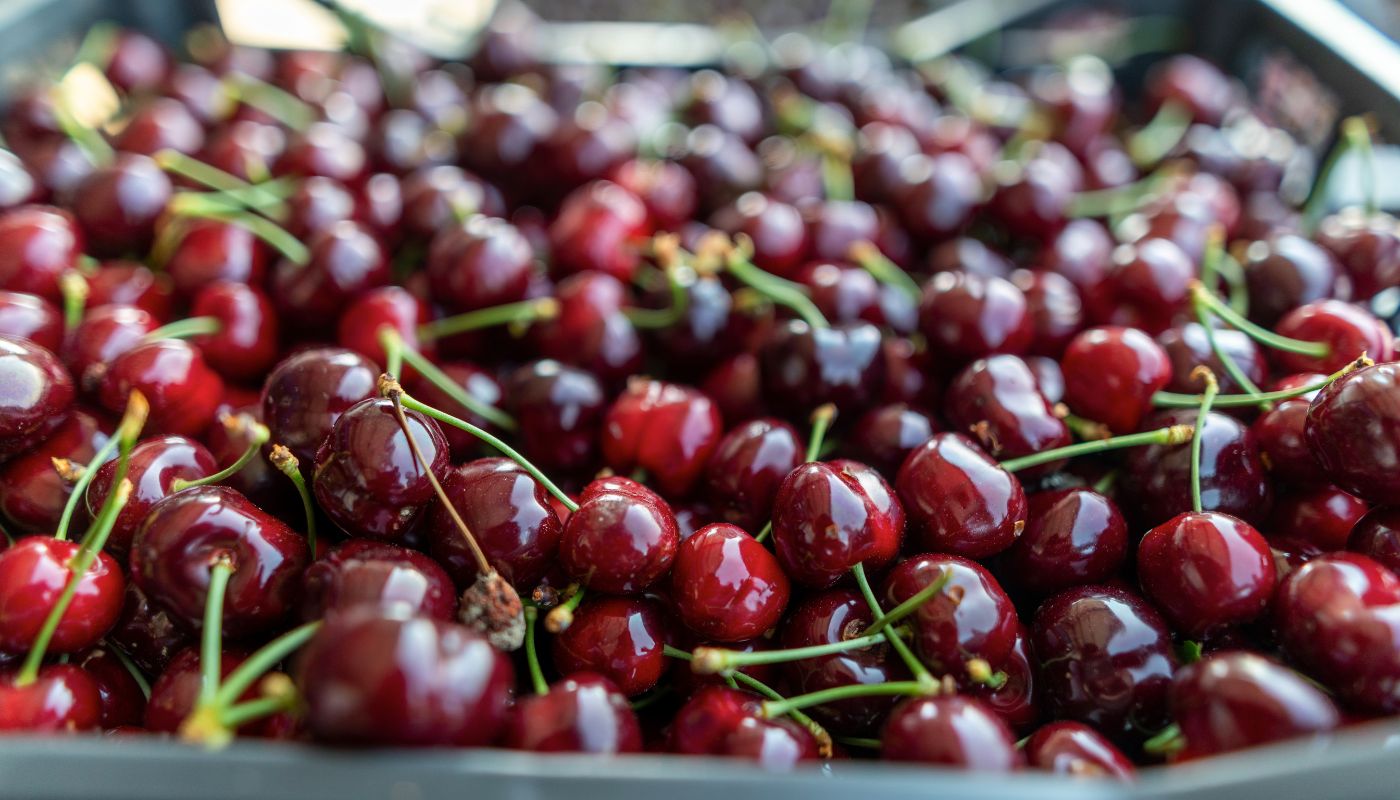A recent report from the United States Department of Agriculture (USDA) paints a grim picture for Turkish fruit growing in Marketing Year (MY) 2025/26. The most severe frosts in three decades, combined with drought, hail, and excessive rainfall, have drastically reduced production, driven up domestic prices, and limited exports.
Despite the technological modernization of some orchards, small producers face a perfect storm: high input costs, limited access to insurance, and millions in losses. The government has activated compensation through TARSIM—the state agricultural insurance program—and subsidies for registered farmers, but the magnitude of the disaster makes it clear that structural resilience measures are needed.
The area planted with cherries—95,000 hectares, of which 76,000 hectares are sweet varieties and 19,000 hectares are sour—has remained relatively stable over the past decade. However, production for MY 2025/26 is projected at just 400,000 metric tons (MT), a 60% decrease from the previous year.
Frosts in March and April affected 36 provinces and devastated crops in key regions such as Izmir (sweet) and Afyonkarahisar (sour). The losses were so severe that TurkSTAT describes them as the worst natural disaster in the sector in 30 years.
The popular Napoleon variety (0900 Ziraat) remains the export favorite due to its resistance to transport, but this year, shipments abroad will fall unprecedentedly: just 10,000 MT compared to much higher usual volumes.
Germany, Russia, and Poland, the main buyers, will see reduced supplies, while competitors such as Uzbekistan and Iran occupy the market with more competitive prices.
In the domestic market, the shortage has driven farmgate prices to 200 Turkish lira (TL) per kilo (USD 4.93), while in stores they reach between 400 and 500 TL/kg (USD 7.39-12.32).
Peaches and Nectarines: Historic Losses in the South
Turkish fruit growing is also suffering in the peach and nectarine segment, with an estimated production of 649,000 MT for MY 2025/26, 45% less than last year. The Mersin-Adana region, which produces more than half of the country’s nectarines, recorded losses of up to 90% due to a week of temperatures between -9 and -11°C in April, an extremely unusual phenomenon in the south.
Although investments in high-density orchards and new varieties have driven sustained growth over the past decade—nectarine production has doubled in five years—the current season will be a dramatic exception.
Domestic consumption will fall to 505,000 MT, with farmgate prices of 35-40 TL/kg (0.86-0.98 USD) and retail prices of up to 200 TL/kg (4.92 USD) for nectarines. Exports will fall to 144,000 MT, with Russia, Iraq, and Romania as the main destinations, compared to a recent history of growth that saw the country export $261 million in 2024/25.
A sector pressured by costs
The USDA emphasizes that, although large producers have managed to modernize thanks to government support, small farmers remain in a critical situation. TARSIM insurance, which reimburses production costs in the event of natural disasters, only covers a fraction of producers due to the high cost of premiums. The Ministry of Agriculture has announced subsidies for all registered farmers affected by frost, but has not yet detailed the amounts.
Current support includes payments to offset fuel and fertilizer costs, as well as incentives for the purchase of certified seedlings (1,220 TL/acre), although many farmers consider this aid insufficient in the face of such severe losses.
Outlook: Resilience or Setback
Turkish fruit growing, one of the pillars of national agriculture and a driver of exports, faces a turning point. The damage in 2025/26 shows that adaptation to climate change will be key: frost protection systems, efficient irrigation, and crop diversification could make the difference.
Meanwhile, Turkish consumers will face high prices and a smaller variety of fresh fruit, and the country will temporarily lose ground in international markets to its competitors. While Türkiye maintains the potential to regain its leadership, the current season will remain a reminder of agricultural vulnerability to increasingly frequent extreme events.
Source: USDA with contributions from Más Producción Editorial Staff









